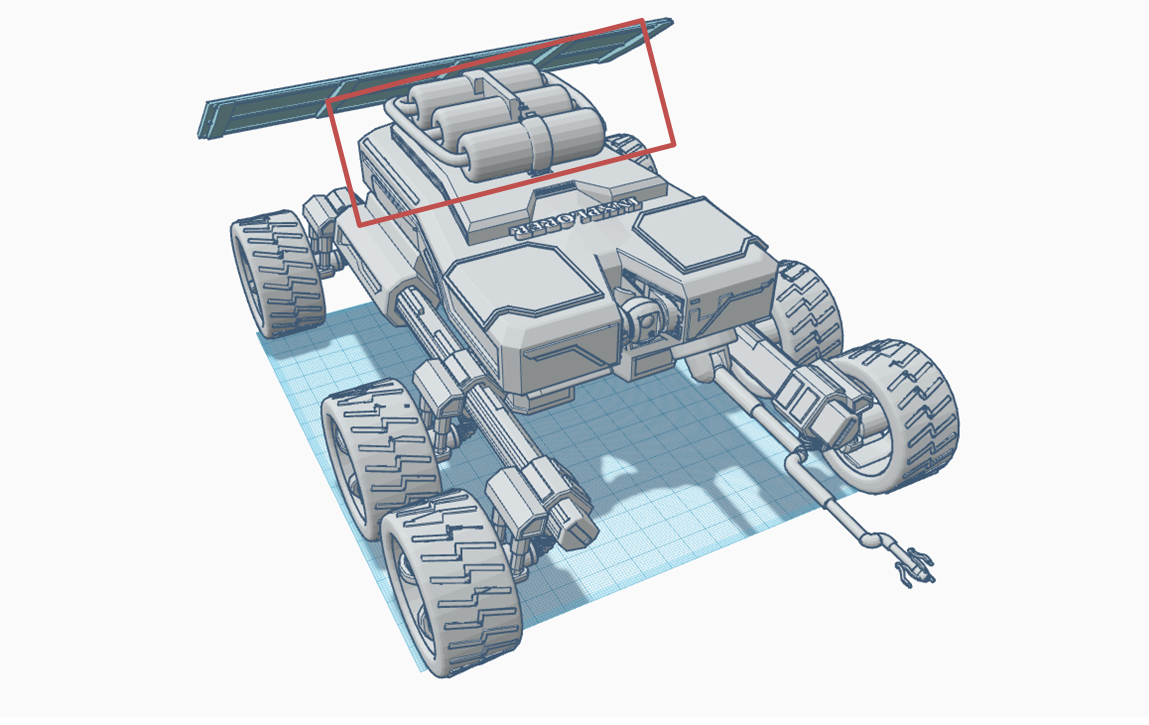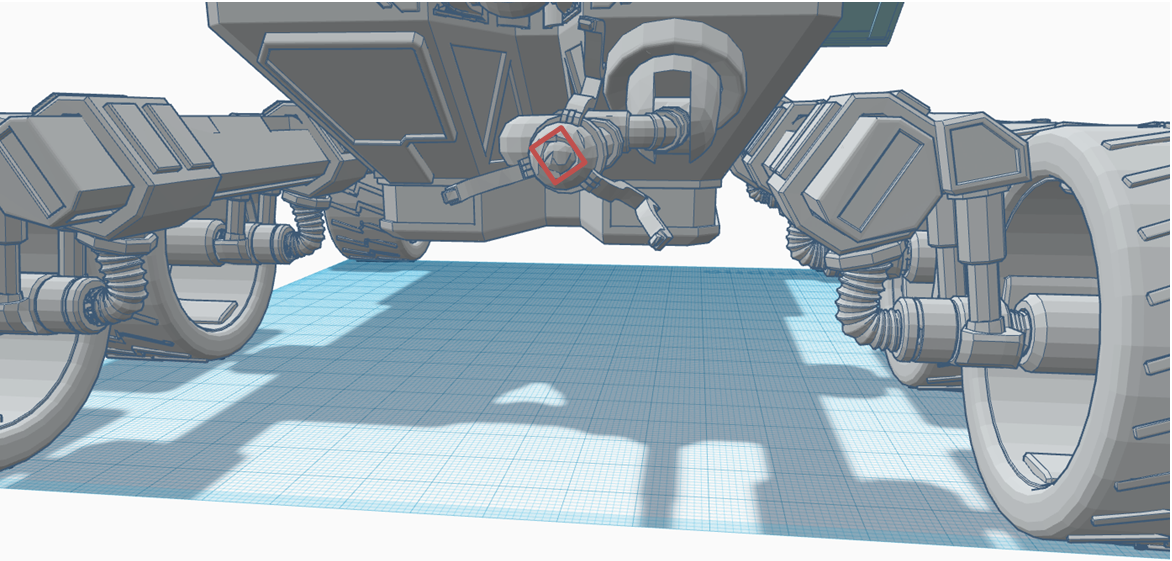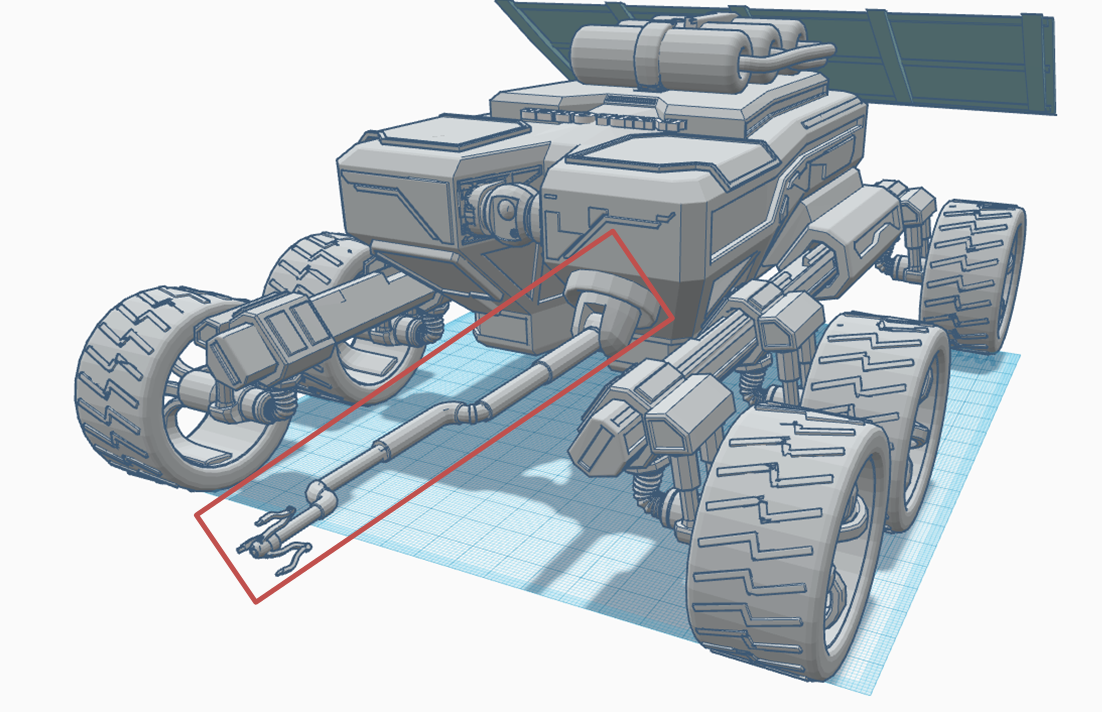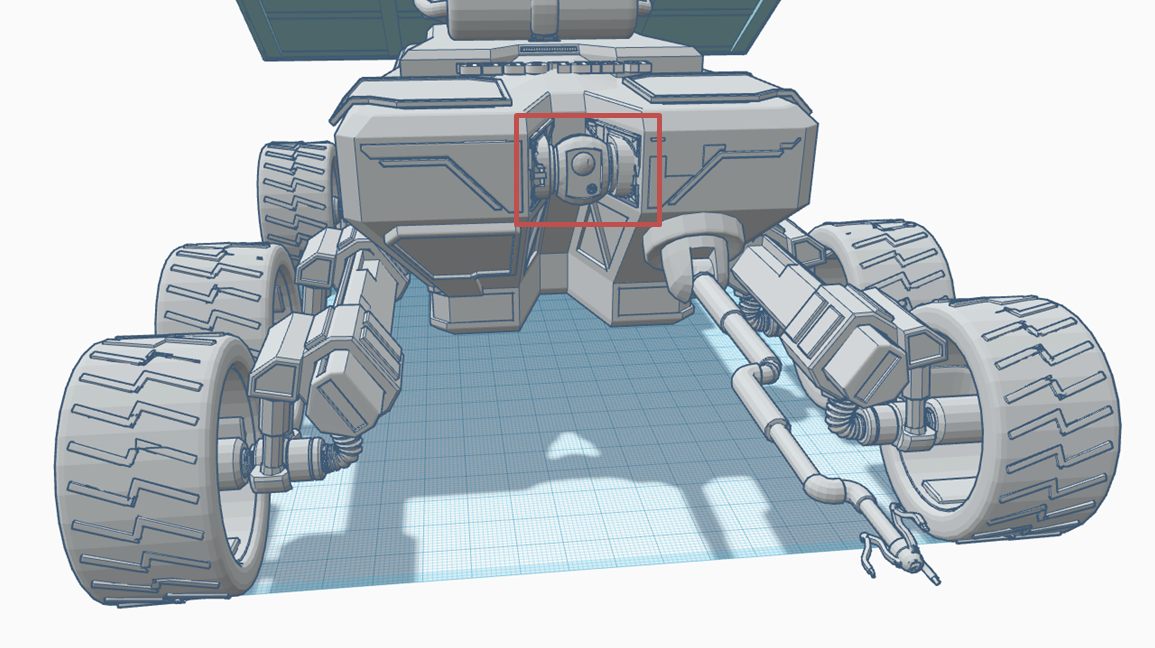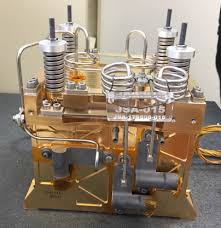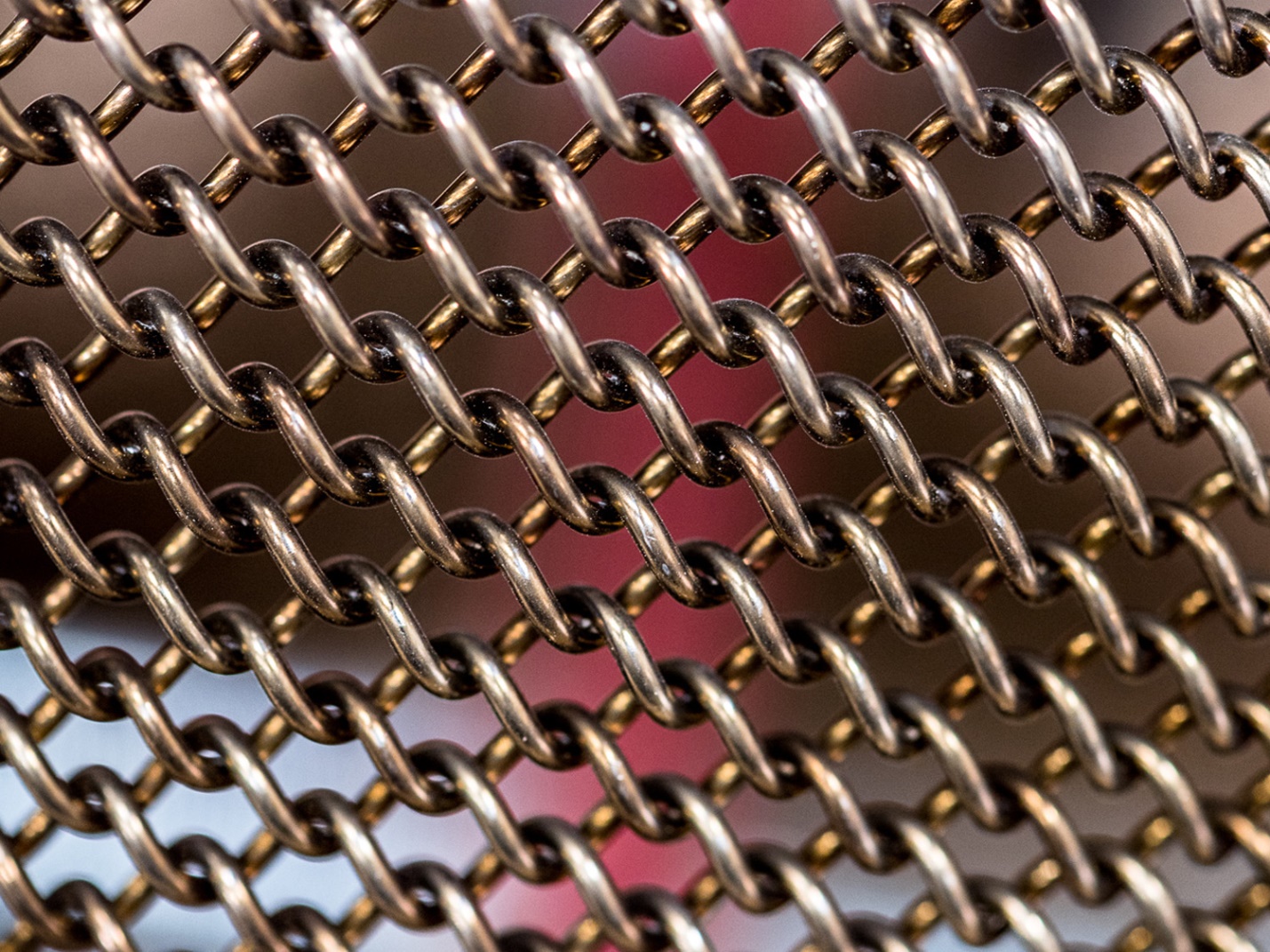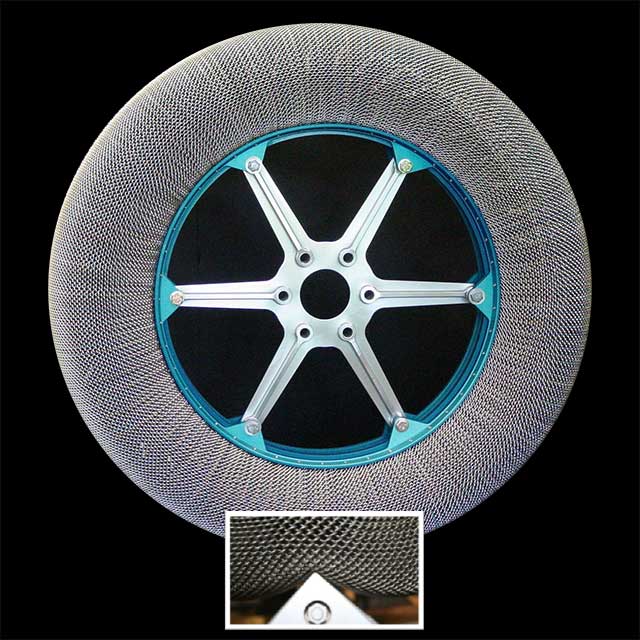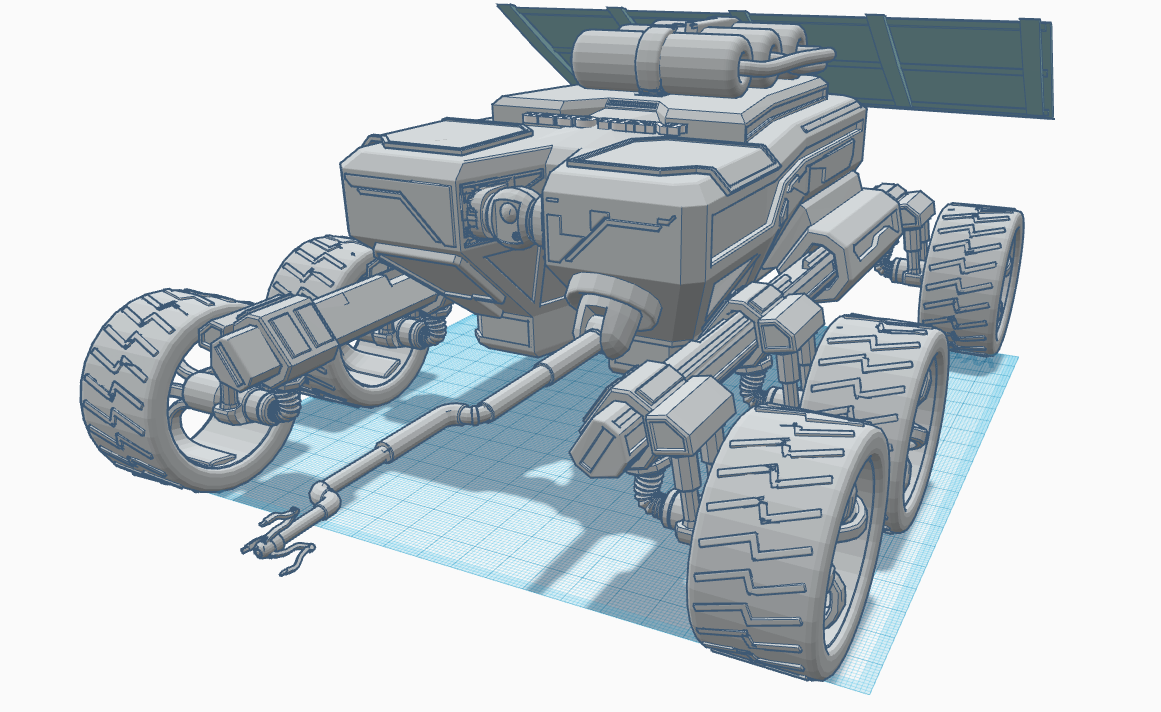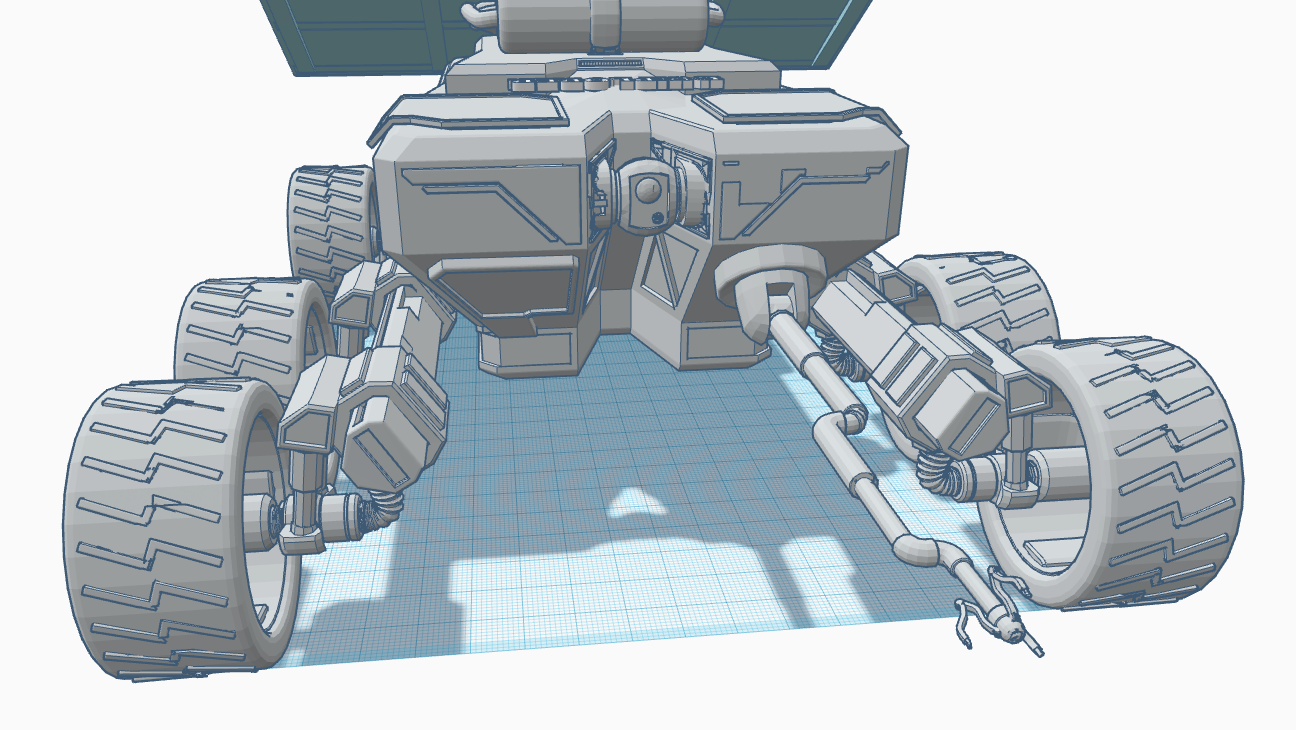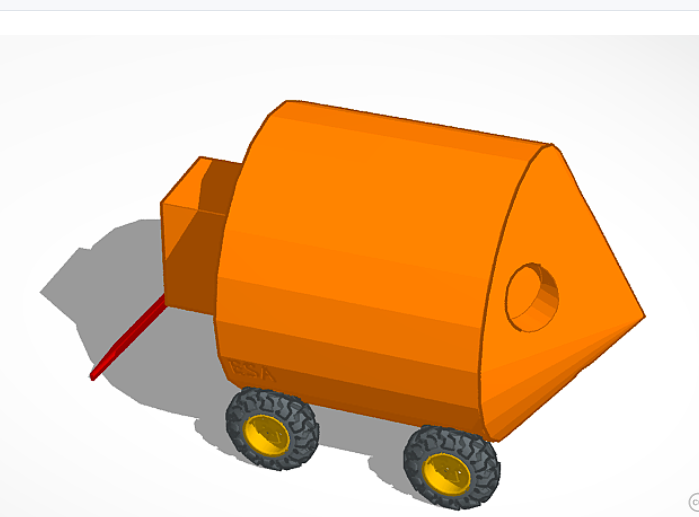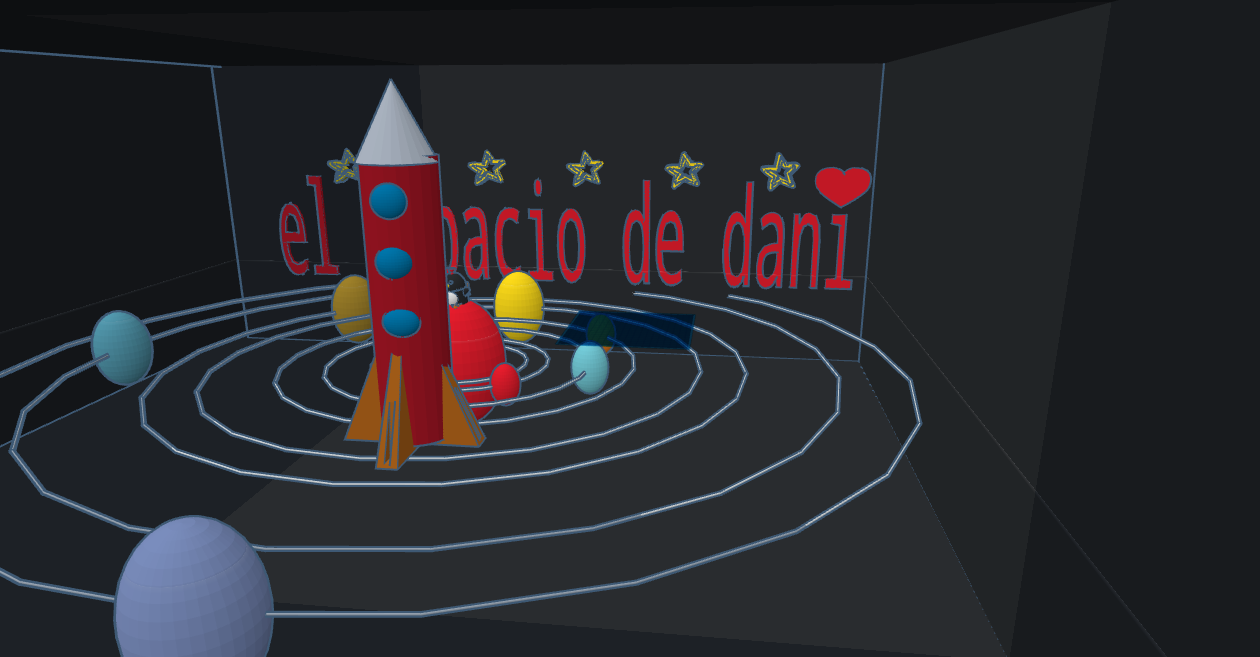Moon Camp Discovery 2021-2022 Project Gallery
All | Lunar lander | Moon Base | Lunar rover | Rocket | Lunar Orbital Space Station | Space Suit
Team: Inxplorer
Category: Lunar rover | Kandy | Sri Lanka | 1 | 14 years old
External link for Tinkercad 3D design
Inxplorer Rover
Family of five multi-purpose U-shaped rovers designed to carry science instruments and payloads. Juno rovers were used in NASA-led field tests on the rocky slopes of a Hawaiian volcano to simulate missions to the Moon. It was developed to collect samples from the Moon, acquire science measurements, and demonstrate tasks like long-distance travel and night survival.
Technical details
| Target destination | Moon |
| Size (Length, width, height) | 1.38 m x 1.6 m x 0.75 m (without mast option installed) |
| Mass | 250 kg |
| Can carry | 200 kg |
| Speed | 12.5 km/h top speed |
| Powered by | Electrical power (Lithium-Ion batteries) |
Highlights
- Inxplorer can carry almost as much as it weighs, is surprisingly quick and agile and can drive over all sorts of terrain and large rocks. And it can drill into rocks, take sample and perform analysis of rocks using its high definition microscope instrument.
- Can either be operated by a human nearby or scan its environment and navigate on its own. Once it spots a target, the fully autonomous rover can drive itself over to the location, use its robotic arm to dig a trench, scoop up samples and deposit them in the collection cans located on either of its “shoulders”
- 4-wheel drive with a unique wheel system that allows it to spin 360 degrees on the same spot
- Its digging robotic arm does double-duty as a mast for sensors that allow it to scan and map its environment to search for minerals, water or ice
- This Rover also can easily drive in the Night with Night Mode. Rover has two Main Light and Night Cameras for High-Quality Images.
EXPLORATION REQUIRES MOBILITY
Exploration requires mobility. And whether you’re on Earth or as far away as the Moon or Mars, you need good tires to get your vehicle from one place to another.
Wheels on the Moon
Three major wheel designs were introduced by NASA and other international researchers for early exploration. While they were vastly different, they were all focused on moving hardware and astronauts across the lunar surface.
Spring Tire
Also Inxplorer rover can adjust its axel length and pass the rocks and small pits.
Tire Architecture
While early tire designs used woven wire, we use Spring Tires are made with a series of interconnected coils. Weighs about 20 lbs and can handle 165 lbs of load. We hope to use these Wheels for Rover.
ISRU Instrument
As Inxpolrer team, We don’t forget to add a ISRU Part for our Rover. This part can involve extraction of metals for construction material in space, which may be more cost-effective than bringing such material up out of Earth’s deep gravity well, or that of any other large body like the Moon or Mars.
Locations
Moon
The Moon possesses abundant raw materials that are potentially relevant to a hierarchy of future applications, beginning with the use of lunar materials to facilitate human activities on the Moon itself and progressing to the use of lunar resources to underpin a future industrial capability within the Earth-Moon system. Natural resources include solar power, oxygen, water, hydrogen, and metals. The lunar highland material anorthite can be used as aluminium ore. Smelters can produce pure aluminium, calcium metal, oxygen and silica glass from anorthite. Raw anorthite is also good for making fiberglass and other glass and ceramic products. One particular processing technique is to use fluorine brought from Earth as potassium fluoride to separate the raw materials from the lunar rocks. Over twenty different methods have been proposed for oxygen extraction from the lunar regolith. Oxygen is often found in iron-rich lunar minerals and glasses as iron oxide. The oxygen can be extracted by heating the material to temperatures above 900 °C and exposing it to hydrogen gas. The basic equation is: FeO + H2 → Fe + H2O. This process has recently been made much more practical by the discovery of significant amounts of hydrogen-containing regolith near the Moon’s poles by the Clementine spacecraft. Lunar materials may also be used as a general construction material. through processing techniques such as sintering, hot-pressing, liquification, and the cast basalt method. Cast basalt is used on Earth for construction of, for example, pipes where a high resistance to abrasion is required. Glass and glass fiber are straightforward to process on the Moon and Mars. Basalt fibre has also been made from lunar regolith simulators.
Successful tests have been performed on Earth using two lunar regolith simulants MLS-1 and MLS-2. In August 2005, NASA contracted for the production of 16 tonnes of simulated lunar soil, or lunar regolith simulant material for research on how lunar soil could be utilized in situ.
Inxplorer Rover ISRU capability classification
- resource extraction
- material handling and transport
- surface manufacturing with in situresources
- surface construction
- surface ISRU product and consumable storage and distribution
- ISRU unique development and certification capabilities
Other Parts
The Cameras
The rover’s “eyes” and other “senses”
The Perseverance rover has several cameras focused on engineering and science tasks. Some help us land on Mars, while others serve as our “eyes” on the surface to drive around. We use others to do scientific observations and aid in the collection of samples.
Robotic Arm
The 3-foot-long robotic arm on Inxplorer can move a lot like yours. And also we can increase the length up to 6-foot. It has a shoulder, elbow and wrist “joints” for maximum flexibility. The arm lets the rover work as a human geologist would: by holding and using science tools with its “hand” or turret. The rover’s own “hand tools” extract cores from rocks, takes microscopic images and analyzes the elemental composition and mineral makeup of Moon rocks and soil.
Tech Specs
Length: 6 feet (1.8 meters)
Names of Tools on the Turret: SHERLOC and WATSON, PIXL, GDRT (Gaseous Dust Removal Tool), Ground Contact Sensor, Drill
Drill: The drill is a rotary percussive drill designed to extract rock core samples from the surface of Mars.
Drill Bits: A suite of interchangeable bits: coring bits, regolith bit and an abrader.
Main Function: Assist in Mars surface investigation and sample collection
Diameter of drilled holes:1 inch (27 mm)
Drill
The rover’s drill will use rotary motion with or without percussion to penetrate into the Martian surface to collect the precious samples. The drill is equipped with three different kinds of attachments (bits) that facilitate sample acquisition and surface analysis. The coring and regolith bits are used to collect Martian samples directly into a clean sample collection tube, while the abrader bit is used to scrape off or “abrade” the top layers of rocks, to expose fresh, un-weathered surfaces for study.
Types of Rock Samples the Drill will Collect
Rock Samples
The cylindrical drill cuts out samples from rock interiors, breaking off the rock sample at its base.
Sampling Equipment on the “Hand” (Turret)
At the end of the arm is the “turret.” It’s like a hand that carries scientific cameras, mineral and chemical analyzers for studying the past habitability of Mars, and choosing the most scientifically valuable sample to cache.
Ground Contact Sensor
The turret has a special sensor to guard against damage if the arm comes into contact with the surface. The contact sensor signals the rover arm to stop if it inadvertently touches the ground.
Sample Handling
Inxplorer will core samples from Moon rocks and soil. Using its drill, the rover will gather and store the cores in tubes on the Moon surface.
Temperature Controls
In order to survive during all of the various mission phases, the rover’s “vital organs” must not exceed extreme temperatures of -173°(-280° Fahrenheit to) Celsius to +127° Celsius (260° Fahrenheit).
The rover’s essentials, such as the batteries, electronics, and computer, which are basically the rover’s heart and brains, stay safe inside a Warm Electronics Box (WEB), commonly called the “rover body.” Heaters are packed inside the rover body, and like a warm coat, the Rover walls help keep heat in when the night temperatures on Moon can drop to -173° Celsius (-° Fahrenheit). Just as an athlete sweats to release heat after an intense workout, the rover’s body can also release excess heat through its radiators, similar to ones used in car engines.
Inxplorer: Rover Parts
The rover has a:
| a body: | a structure that protects the rovers’ “vital organs” |
| brains: | computers to process information |
| temperature controls: | internal heaters, a layer of insulation, and more |
| a “neck and head”: | a mast for the cameras to give the rovers a human-scale view |
| eyes and other “senses”: | cameras and instruments that give the rovers information about their environment |
| arm: | a way to extend its reach |
| wheels and “legs”: | parts for mobility |
| energy: | batteries and solar panels |
| communications: | antennas for “speaking” and “listening” |


